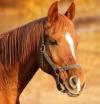Do we need to protect Pets from COVID-19?

COVID-19 emerged in Wuhan, China in December 2019. It has now spread to most of the countries across the globe. Our attention has focused on the spread of COVID-19 among humans. How about pets and animals in general?
The most likely origin of the coronavirus is from bats; Thus, the virus made a jump from an animal to a human. The fact that an animal infected humans in the first place raise a few questions.
Can humans, in turn, infect animals? For example our pets. And, is it possible that our pets could infect us?
Which pets can get infected by COVID-19?
People have various kinds of animals as pets, ranging from cats and dogs to poisonous snakes and ants. But, cats and dogs are the most common ones around the world.
Ferrets. A recent study in Science reports that cats and ferrets can get COVID-19 infection. Ferrets are common as animal models for respiratory diseases make this finding expected. Yet, given a large number of ferrets as pets, that sounds a bit scary. No studies exist whether pet ferrets can infect humans with COVID-19.

A ferret in a cage.
Cats. Cats can are susceptible to COVID-19 infection. Importantly, cats can get infected through the air. Young cats are more likely to contract the disease than adult cats.
Another recent study also found that cats are likely to contract the disease. Cats received the score 100 on the scale from 0-100 where 100 is the most likely (Table 1.). This study examined similarities among the ACE2 receptors among various species. The SARS-CoV-2 virus uses ACE2 (Angiotensin-converting Enzyme 2) to enter into the cells.
If you let your cat out at night, you may not know what that cat brings back home. There are no studies on whether cats can infect humans, but to be on the safe side, we should be cautious. What we do know, is that cats can infect other cats.
It may have never been a good idea to let your cat out at night, but to be on the safe side, it is best to keep your cat home.
Dogs. Reportedly two dogs have contracted the coronavirus in Hong Kong. A German Shepard and a Pomeranian have tested positive for COVID-19. It is possible that they have contracted the disease from their owners.

A recent Chinese study, published in Science, investigated five young beagles. They concluded that the virus is unable to cause the disease in the tested dogs. Also, the uninfected dogs in contact with the infected ones tested negative for the virus.
In early March 2020, Ye Qiu et al. ranked the ACE2 receptors in several species by their binding potential to the SARS-CoV-2 virus (Table 1.). The ranking ranges from 0-100, where 100 is the most susceptible. In this ranking, dogs get a score of 70.
Ye Qiu et al. ranked the ACE2 binding potentials using bioinformatics without testing live animals. Yet, it tallies well with other studies. Dogs are unlikely to contract COVID-19.
But, at the same time, we know that some individual humans are not contracting COVID-19 either. Thus, in a lack of more testing, we should be adventurous. It could be that some dog breeds are more susceptible than others. We don't know yet.
What other domesticated animals can get COVID-19 disease?
Pigs, chickens, and ducks are not susceptible to contracting COVID-19 disease. That according to the study published in science. In contrast, Ye Qiu et al. bioinformatics study gives pigs the rank of 100, indicating that pigs are susceptible.
Horses, goats, and sheep also received a score of 100 in the study of Ye Qiu et al. Cows and buffalos a score of 80. The study lists many more species that are not domesticated but listed as a reference. Further studies will inevitably emerge for other species.
Conclusions
COVID-19 originates from animals. Most likely from bats. At some time point, the virus mutated which allowed it to infect humans. No conclusive evidence exists that humans can infect animals. Only two dogs in Hong Kong may have contracted the disease from their owners.
We know the SARS-CoV-2 virus has its origins in animals. But, no evidence suggests that we can get infected by dogs or cats. Although the opposite is possible. CNN has reported, a 4-year-old Malayan tiger has tested positive for the virus at the Bronx Zoo in New York. The big cat is likely to have contracted the virus from its caretaker who has tested positive. See also USDA Statement on the Confirmation of COVID-19 in a Tiger in New York.
Table 1. Scoring of ACE2 for susceptibility for SARS-CoV-2 binding
| Photo/illustration | Species | Score |
|---|---|---|
 |
Chinese horseshoe bat (Rhinolophus sinicus) | 100 |
 |
Civet (Viverricula indica pallida) | 100 |
 |
Horse (Equus caballus) | 100 |
 |
Cat (Felis catus) | 100 |
 |
Human (Homo sapiens) | 100 |
 |
Lynx (Lynx canadensis) | 100 |
 |
Pangolin (Manis javanica) | 100 |
 |
Weasel (Mustela erminea) | 100 |
 |
Pig (Sus scrofa) | 100 |
 |
Goat (Capra hircus) | 90 |
 |
Sheep (Ovis aries) | 90 |
 * * |
Flying fox (Pteropus alecto) | 90 |
 |
Cow (Bos taurus) | 80 |
 |
Buffalo (Bubalus bubalis) | 80 |
 |
Dingo - Dog (Canis lupus dingo) | 70 |
 |
Pigeon (Columba livia) | 60 |
 ** ** |
Kea (Nestor notabilis) | 50 |
 |
Bee eater (Merops nubicus) | 50 |
 *** *** |
Little egret (Egretta garzetta) | 50 |
 |
Cuckoo (Apaloderma vittatum) | 40 |
 **** **** |
Speckled Mousebird (Colius striatus) | 40 |
 ***** ***** |
Armadillo (Dasypus novemcinctus) | 0 |
 *1* *1* |
Thicket rat (Grammomys surdaster) | 0 |
 |
House mouse (Mus musculus) | 0 |
 |
Rat (Rattus norvegicus) | 0 |
 *2* *2* |
Pallas pit viper (Protobothrops mucrosquamatus) | 0 |
More information at
• World Organisation For Animal Health: Questions and Answers on the 2019 Coronavirus Disease (COVID-19)
• Centers for Disease Control and Prevention (CDC): If You Have Animals


